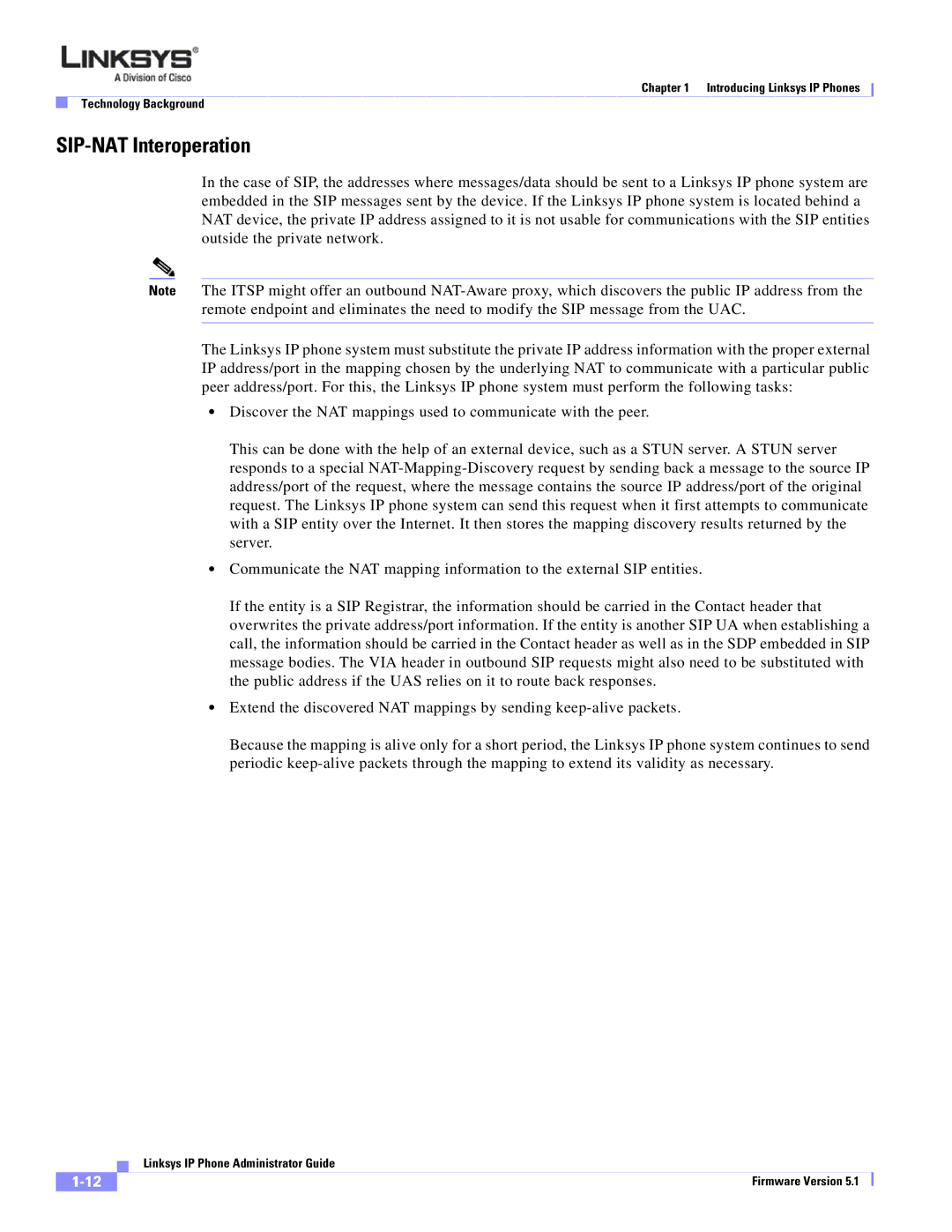
Chapter 1 Introducing Linksys IP Phones
Technology Background
SIP-NAT Interoperation
In the case of SIP, the addresses where messages/data should be sent to a Linksys IP phone system are embedded in the SIP messages sent by the device. If the Linksys IP phone system is located behind a NAT device, the private IP address assigned to it is not usable for communications with the SIP entities outside the private network.
Note The ITSP might offer an outbound
The Linksys IP phone system must substitute the private IP address information with the proper external IP address/port in the mapping chosen by the underlying NAT to communicate with a particular public peer address/port. For this, the Linksys IP phone system must perform the following tasks:
•Discover the NAT mappings used to communicate with the peer.
This can be done with the help of an external device, such as a STUN server. A STUN server responds to a special
•Communicate the NAT mapping information to the external SIP entities.
If the entity is a SIP Registrar, the information should be carried in the Contact header that overwrites the private address/port information. If the entity is another SIP UA when establishing a call, the information should be carried in the Contact header as well as in the SDP embedded in SIP message bodies. The VIA header in outbound SIP requests might also need to be substituted with the public address if the UAS relies on it to route back responses.
•Extend the discovered NAT mappings by sending
Because the mapping is alive only for a short period, the Linksys IP phone system continues to send periodic
| Linksys IP Phone Administrator Guide |
Firmware Version 5.1 |
